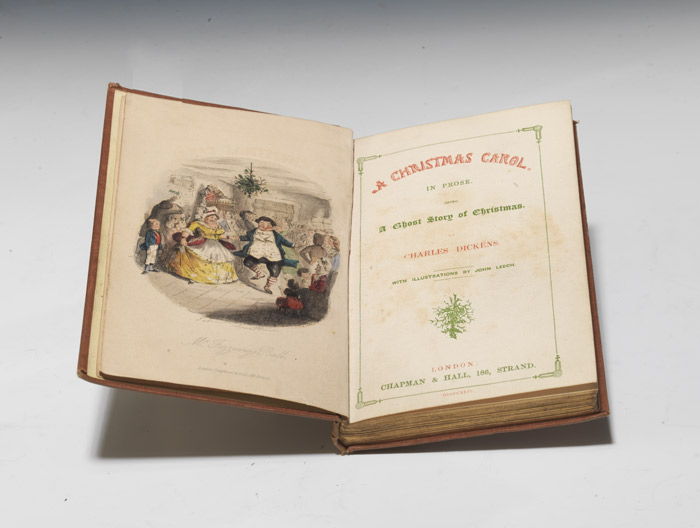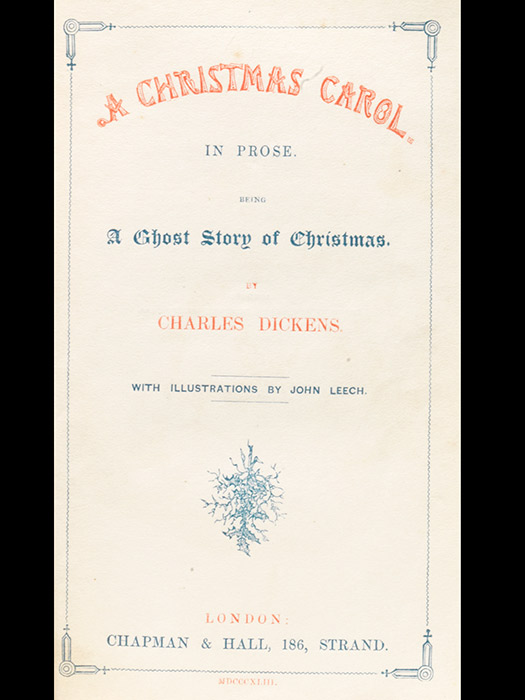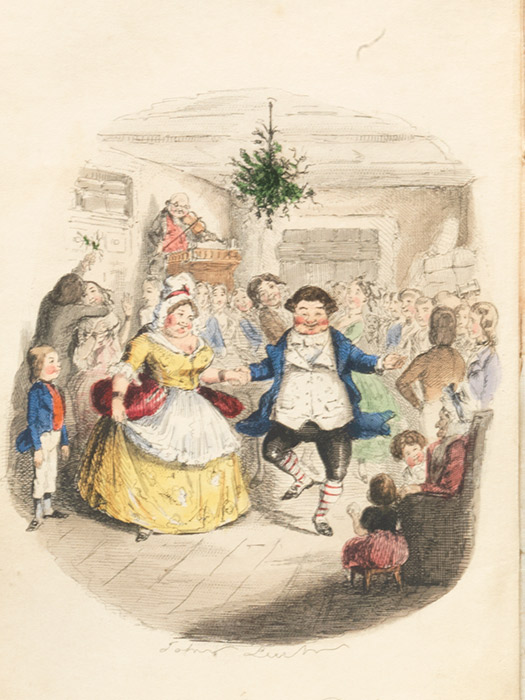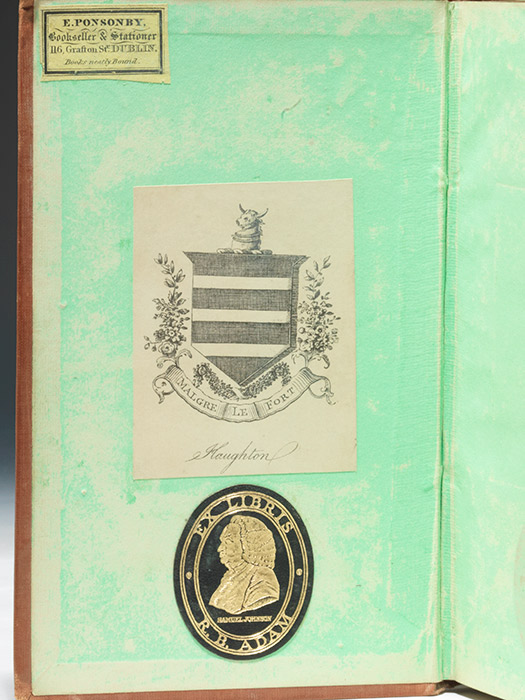…how he wept over it, and laughed and wept again…how he walked thinking of it fifteen and twenty miles about the black streets of London, and many a night after all sober folks had gone to bed. And when it was done…he let himself loose like a madman.
–John Forster, Life of Dickens, the first biography of Charles Dickens
Sometimes I think we readers don’t understand all the blood, toil, and soul that go into creating a book. We read the final product and assume it sprang, Athena-like, fully formed and perfect from the creator’s head. But one of the most influential works of English literature actually appeared through the blackness and kinetic fire of despair: A Christmas Carol, by Charles Dickens.
Les Standiford sums up the context admirably:
At the time he sat down to write his ‘slender volume,’ Dickens’s once unequaled popularity was at a nadir, his critical reputation in a shambles, his bank account overdrawn.
Faced with bankruptcy, he was contemplating giving up writing altogether. Instead, he pulled himself together and, in six short weeks, wrote a book that not only restored him in the eyes of the public but began the transformation of what was then a second-tier holiday into the most significant celebration of the Christian calendar.
Indeed, in Standiford’s excellent book The Man Who Invented Christmas I recently learned that before the mid-19th century, Christmas did not tower over all the other Christian holidays. In fact, it was a somewhat minor holiday: not nearly as big as Easter, but somewhat closer to Memorial Day.
In a move that has been repeated a frightening number of times in the history of the book—and which gives hope to struggling authors everywhere—Dickens’s publisher Chapman and Hall actually refused initially to take on this now-classic of English literature. Dickens was in the midst of producing Martin Chuzzlewit in parts (like all his previous novels). It was shaping up to be an utter failure. His publisher wasn’t interested in running off to produce a deluxe gift book for a holiday that hardly mattered. They didn’t want to risk any more money on Dickens at the moment.
Little did they know that Carol would create not only a gigantic Christmas book market, but change the popular understanding of Christmas forever.
Let us all thank the Muses that while Chapman and Hall didn’t believe in the idea of a Christmas book, Charles Dickens did. He decided to pay for the production himself, despite the fact that he was struggling financially. He was certain it would be a major success, and he treated the production of the book as such. A beautiful little volume it is, the only Dickens first edition to feature hand-colored plates.
Dickens collectors know that the author enforced high standards on the finished product. After receiving a few trial copies, Dickens continued to make major changes to the physical book. Unhappy with the green titles and endpapers, he requested both be changed (to blue and yellow, respectively). Trial copies of A Christmas Carol, with the green half-title and other points, do periodically appear and are much valued by collectors. In any case, one of the 6000 copies first published on December 19th, 1843, is extremely rare. Not only did the entire run sell out in a single day, but this well-loved and fragile book is extremely difficult to find in beautiful condition.
Dickens had a vision, and it was consuming him. He turned down invitations from friends (including the famous illustrator George Cruickshank). To one he wrote, “Your note found me in the full passion of a roaring Christmas scene.” This vision took such a singular hold on his mind that the book was finished in just six weeks. He wrote to another friend:
I believe I have written a tremendous Book; and knocked the Carol out of the field. It will make a great uproar, I have no doubt.
He was right.







Comments
13 Responses to “The Story Behind A Christmas Carol by Charles Dickens”
Jeff says: December 16, 2013 at 10:39 pm
ah inspiring! Enjoyed the information. Note worthy!
Allen says: December 23, 2013 at 12:30 am
What a pleasant insight into Mr. Dicken’s classic tale of a miser’s conversion, that has touched and inspired countless millions over the years. This article adds appreciation and more flavor to the already great story.
Thank you, Rebecca, and may God bless you and yours this Christmas season!
Richard Close says: December 19, 2013 at 11:30 pm
“…I recently learned that before the mid-19th century, Christmas did not tower over all the other Christian holidays. In fact, it was a somewhat minor holiday: not nearly as big as Easter, but somewhat closer to Memorial Day.””
I believe I’m correct in my statement here that Catholicism in Europe was not the major religion at that time, and neither was it in the Colonies. I am certain that until the late 60’s many U.S. fundamentalist Protestants did not practice ChristMASS and preached against its celebration, believing it to be pagan and heretical.
You also stated that the entire 6000 books sold in a single day, is that sold by the publisher to the dealers or from the dealers to the public? I find it extraordinary that news spread about this book in order for these too sell like this. After all, the Net wasn’t around then! 🙂
Chris says: December 20, 2013 at 1:29 am
I love how Dickens’ stories are for the everyman. He set himself apart from authors such as Austen by writing from a perpspective of the underprivileged. Rather than being the villan opportunist portrayed by the upper crust, Dickens found nobility in the hard work of the working class without necessarily finding inherant fault with the wealth of the wealthy. Sure his stories are laced with the improbable happy ending I think he found in his own lifes story, but then again where would the world be if every story echoed the brutality of the Tell-Tale Heart. Very good article. I learned much behind the story I cherish. Thank you.
Karlo says: December 20, 2013 at 4:18 am
A great read.
Jay says: December 21, 2013 at 8:21 am
Rebecca,
Thoroughly enjoyed your post about Dickens. Thanks for sharing.
Don Sauter says: December 27, 2013 at 6:54 am
Love the post — didn’t know that he paid for the production of the book. He was right, the book was an awesome piece of work. Many more should take the time to read it.
Thanks again –
p.s. Really enjoy how you describe the books that you review. Keep up the great job!
Peter says: December 27, 2013 at 11:01 pm
Thank you for sharing this,Rebecca. I will look forward to reading many more articles by you in 2014. Have a happy,healthy,and prosperous New Year!
Christopher says: December 28, 2013 at 11:24 pm
I did not realize how great of an influence A Christmas Carol had on how we celebrate Christmas. I really liked learning it’s history. Found out that there are at least 2 other Christmas stories written by Dickens. They are The Chimes and The Cricket on the Hearth. Looking forward to learning more about them and how they compare against A Christmas Carol.
Randall says: January 3, 2014 at 4:48 pm
Indeed, Dickens’ Christmas tome inspired many of the traditions used to celebrate the holiday — and the Eduardian dress.
Dzadzy says: January 5, 2014 at 6:13 pm
So how much is the book worth?
Rebecca Romney says: January 10, 2014 at 12:24 am
That depends greatly on the condition of each individual copy. Here are the particulars for a very nice copy we have right now: http://www.baumanrarebooks.com/rare-books/charles-dickens/christmas-carol/90724.aspx
Mike Vincent says: November 18, 2015 at 4:23 pm
I wonder if Dickens in any way had in mind Jesus’ parable in Luke 16:19-31. There the rich man wants someone from the dead to go and speak to his brothers. Jesus has Abraham say that even if someone rises from the dead, that men wouldn’t repent. Of course, Jacob Marley coming back, along with the ghosts, makes all the difference for Scrooge.